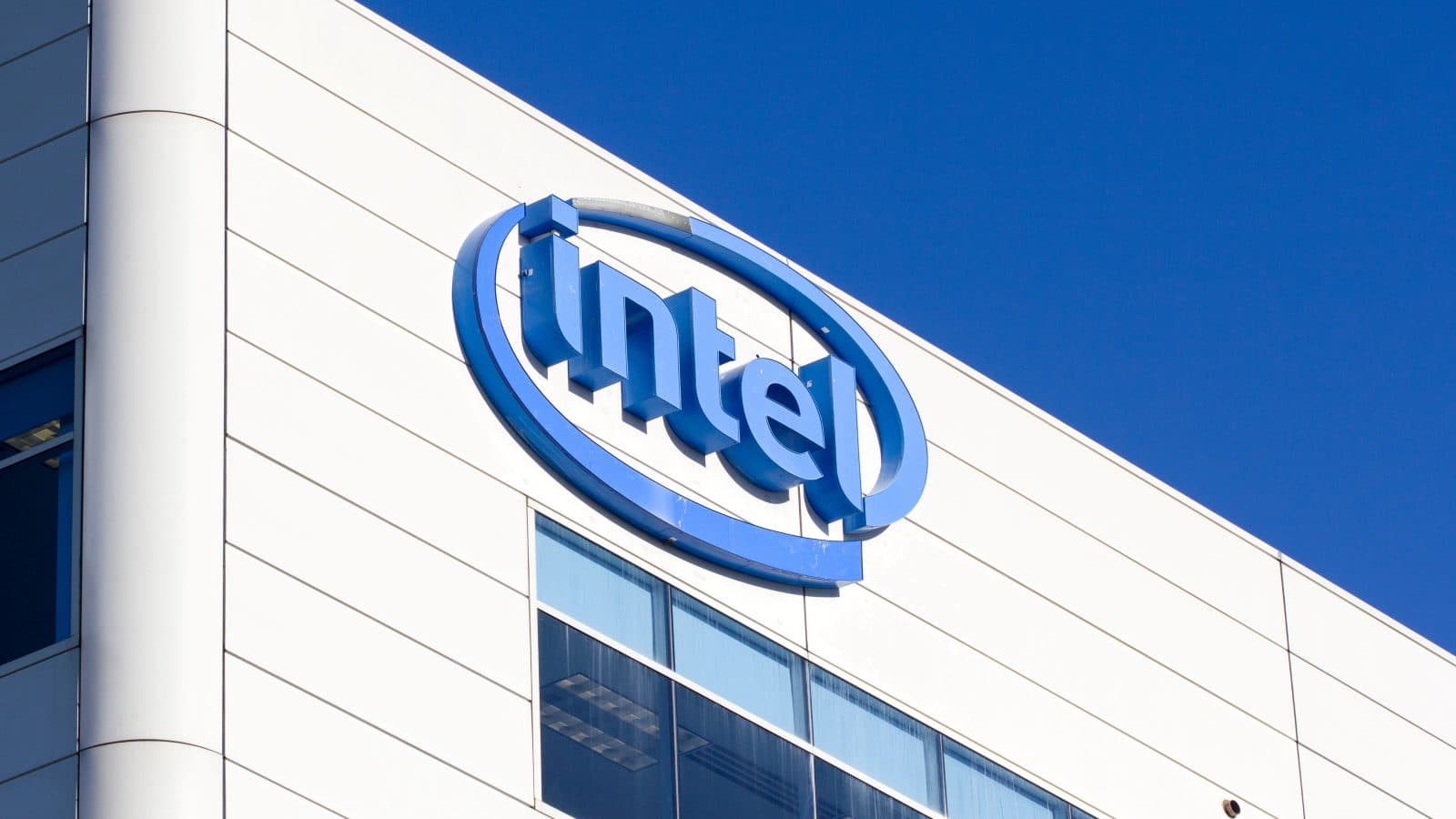Can Intel Chip Away at the $17B Bitcoin Mining Market With New ASIC?
Intel is hoping its advance into crypto mining will help it claw back some of its lost market share

Intel logo seen at Intel’s headquarters in Santa Clara, California, USA. Credit: Shutterstock
- Intel is expected to reveal its low voltage, energy efficient Bitcoin mining ASIC next month
- While its possible Intel’s ASIC could see long run potential in further professionalizing Bitcoin’s mining market, entrenched players were likely to continue dominating, according to one mining expert
Intel, one of the world’s largest semiconductor chip makers by revenue, is expected to unveil its bitcoin mining chip later next month in an attempt to capitalize on crypto’s booming mining sector.
The chip giant will unveil its “Bonanza Mine: An Ultra-Low-Voltage Energy-Efficient Bitcoin Mining ASIC,” according to program details for the upcoming International Solid-State Circuits Conference to be held Feb. 19-26.
ASIC, or application-specific integrated circuits, refer to an integrated circuit chip designed for specific use cases. In the case of crypto mining, ASICs are designed in such a way as to more optimally solve a crypto mining puzzle through hashing power.
Intel is hoping its advance into crypto mining will help it claw back some of its lost market share after a disastrous decision in 2014 to opt-out of extreme ultraviolet (EUV) machines used in the production process of advanced chips.
The machines that Intel decided against at the time use a laser with EUV light in the manufacturing process and allow competing manufacturers, like Taiwan’s TSMC, to create chips that can be produced at a much smaller scale than traditional means while containing more transistors per chip. Intel hopes to have its own fleet of EUV machines in operation sometime this year.
Providing the picks and shovels to miners amid another crypto bonanza has proved profitable for large players like Bitmain and Whatsminer. Intel is banking that its latest venture will allow it to buoy some of the company’s poor decisions in the past.
Depending on the month, the total profits obtained from bitcoin mining revenue sit between $1 billion to $1.7 billion or yearly revenue of around $17 billion, data from The Block shows. Meanwhile, sales revenue of mining rigs from the likes of Bitmain were estimated to be in the billions.
“It’s not surprising to see hardware manufacturers seek out new lines of production to increase their bottom line,” said William Foxley, media director at Compass Mining.
Foxley also said that while it was possible Intel’s ASIC could see long-run potential in further professionalizing Bitcoin’s mining market, Bitmain, and to a lesser extent Whatsminer, would continue to be the dominant ASIC manufacturer.
“There’s simply too far a gap for players like Intel to make up,” said Foxley.
Ultra-Low-Voltage and Energy-Efficient
While details on Intel’s new ASIC are scant, the name suggests the chip giant is attempting to target one major area of concern in the Bitcoin mining process and increased hashing power — energy efficiency.
Criticism often points to bitcoin’s energy use as an environmental hazard, though research released by The Bitcoin Mining Council on Tuesday points the discussion in a different direction.
According to the research, it is estimated the sustainable electricity mix for the global crypto mining industry grew to 58.5% in Q4 2021, up 1% from the previous quarter, which made it “one of the most sustainable industries globally.”
Keeping the cost of production down is key in any market to maximizing profit, doubly so when it comes to the cost of mining cryptocurrencies. Competition is fierce, and choosing the right machines as well as locations around the world that are well-suited and politically favorable towards miners are the key differences between the success and failure of miners’ operations.
Whether Intel can chip away at some of the entrenched players and provide a more profitable product for miners remains to be seen.
Get the news in your inbox. Explore Blockworks newsletters:
- The Breakdown: Decoding crypto and the markets. Daily.
- 0xResearch: Alpha in your inbox. Think like an analyst.






